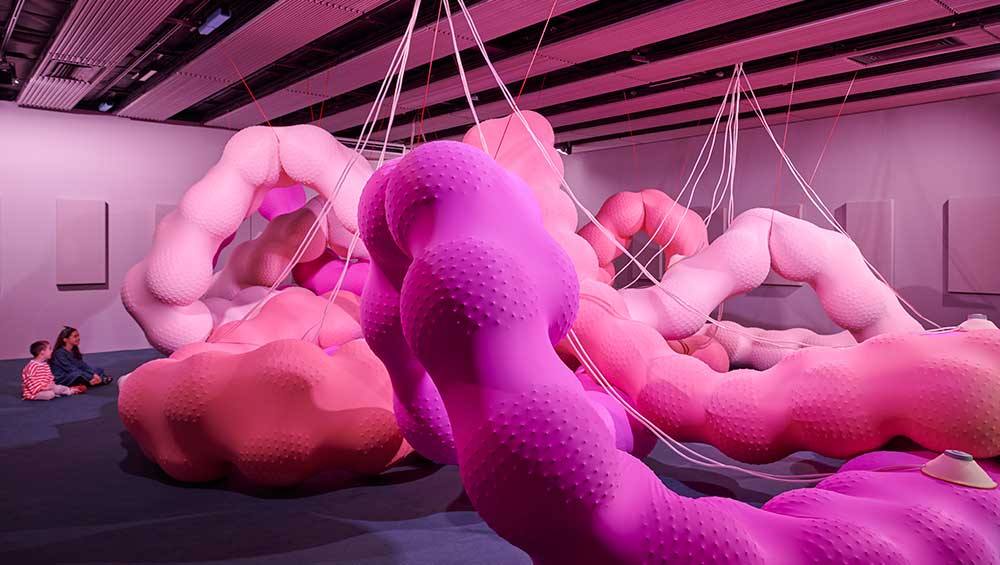
Installation view of Eva Fàbregas, When Forms Come Alive, 7 February — 6 May 2024. Photo: Jo Underhill. Courtesy the Hayward Gallery.
Hayward Gallery, London
7 February – 6 May 2024
by JOE LLOYD
Who would put bath foam in a gallery? The Monaco-born French artist Michel Blazy, for one. And looking at his Bouquet Final (2012), you can see why. Blazy has installed a scaffolding structure in the Hayward Gallery and fitted it with troughs containing translucent whorls of effervescent foam. They fizz and glimmer, cascading out of the troughs, curling like meringue. Gravity gradually nudges them towards the floor, too slowly to be easily perceived. The fallen foam is caught by a rubber mat. The white suds make the surface look like a roiling sea. The sculpture almost seems alive.
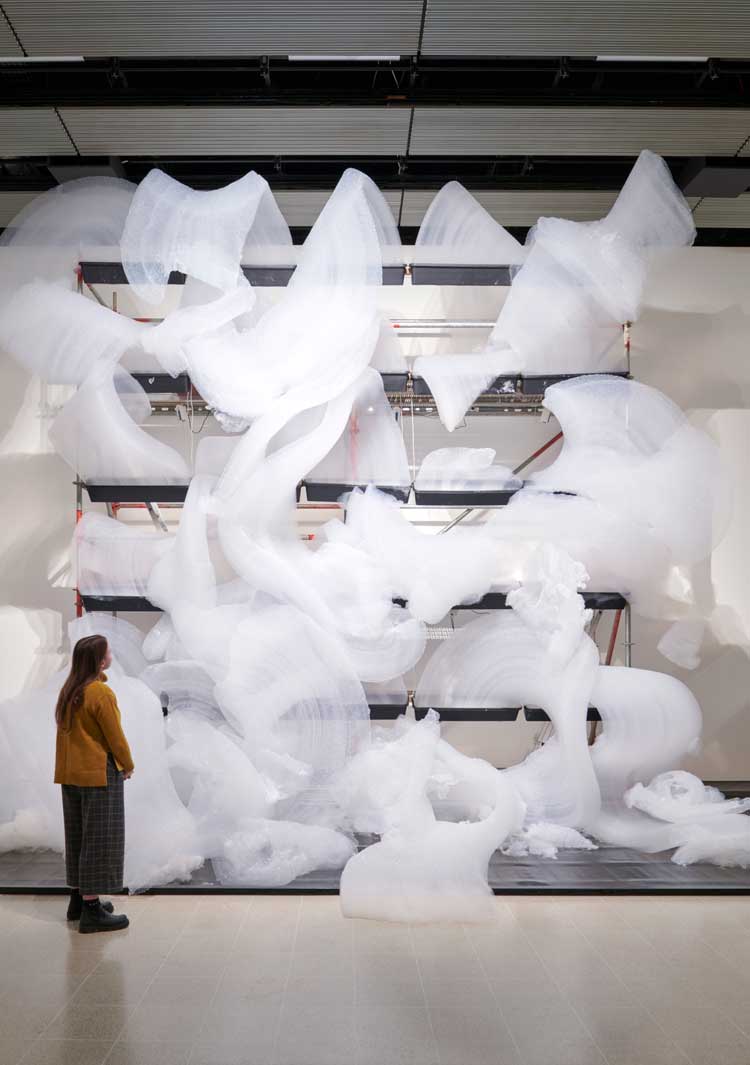
Installation view of Michel Blazy, When Forms Come Alive, 7 February — 6 May 2024. Photo: Jo Underhill. Courtesy the Hayward Gallery.
Blazy is one of 21 artists featured in When Forms Come Alive. Curated by Hayward director Ralph Rugoff, it highlights how contemporary artists have captured movement, gesture and tactility in sculpture. There are surprises around every corner. Olaf Brzeski contributes a pair of his Little Orphans (2009, 2014), in which cast-iron slabs are warped so that they appear to slump on chairs. Choi Jeong Hwa’s Blooming Matrix (2008) contains totem-like columns made from discarded items, such as plastic tableware, balloons and rusted tubing. These works are refreshingly varied and potential in their own right, as well as part of the overall show. Theme aside, the exhibition serves as a congenial primer to the past few decades of abstract sculpture.
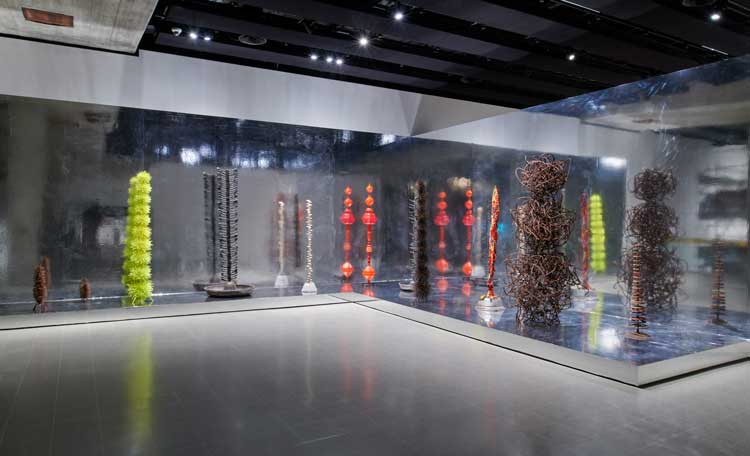
Installation view of Choi Jeong Hwa, When Forms Come Alive, 7 February — 6 May 2024. Photo: Jo Underhill. Courtesy the Hayward Gallery.
Evoking movement in sculpture is nothing new. One of the marvels of Bernini’s Apollo and Daphne (1622-25) is the sense that the mythological figures have been suspended mid-motion, as if they will spring back into the movement the moment we turn away. The biomorphic forms of modernist Hans Arp feel as if they could be squished by hand into new shapes. And kinetic art has a storied history, from Alexander Calder’s drifting mobiles to Jean Tinguely’s motorised contraptions. Where the Hayward Gallery claims these contemporary approaches differ is in their interest in capturing the flux of nature: the flow of lava, the breaking of waves, the proliferation of microorganisms, the elaborate construction of spider webs.
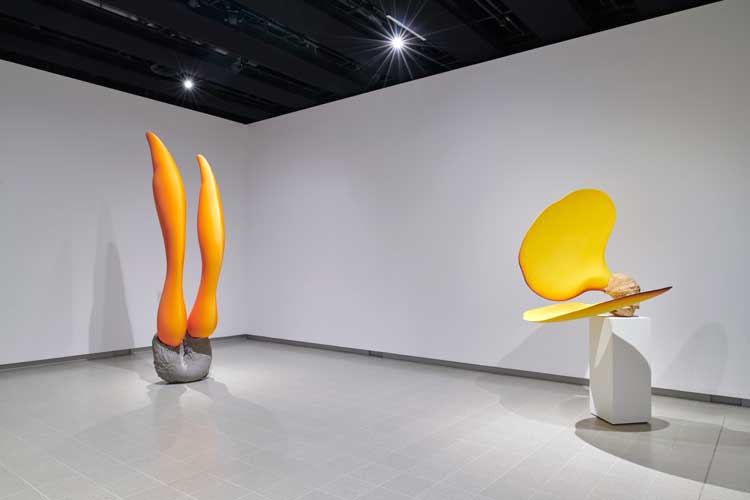
Installation view of Teresa Solar Abboud, When Forms Come Alive, 7 February — 6 May 2024. Photo: Jo Underhill. Courtesy the Hayward Gallery.
Echoes of nature thus abound, to various degrees of explicitness. Some of Jean-Luc Moulène’s glass sculptures resemble organs, while Teresa Solar Abboud’s Tunnel Boring Machine (2021) brings out the similarities between the eponymous technology and animal fins and flaps. Eva Fàbregas’ engrossing Pumping (2021), meanwhile, is a tangled clot of pulsating tubes that resembles the entrails of some gigantic beast. Bass music plays, and the sculpture almost seems to gyrate with the vibrations.
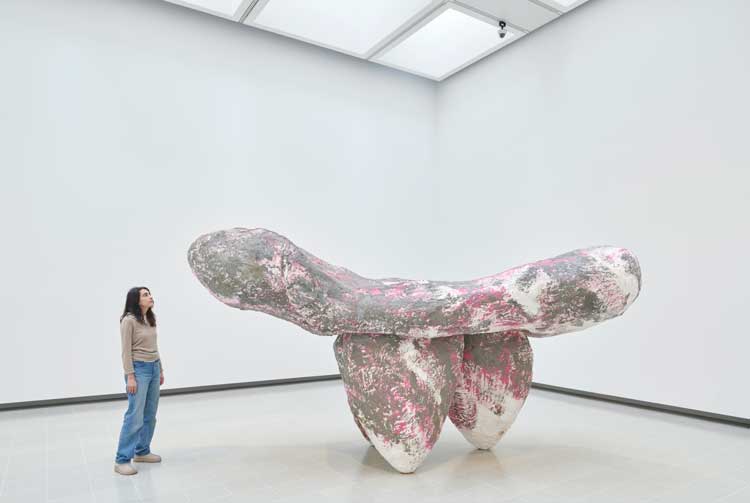
Installation view of Phyllida Barlow, When Forms Come Alive, 7 February — 6 May 2024. Photo: Jo Underhill. Courtesy the Hayward Gallery.
Two large sculptures by the late Phyllida Barlow (2019-22, 2022) use a range of industrial materials – variously steel, timber, plaster, cement, wire netting, scrim, cement, polystyrene, polyfoam, polyurethane foam, PVA, sand and paint stripper – to create vast sculptures that could be ancient rock formations or clumps of alien plants. They have a foreboding presence.
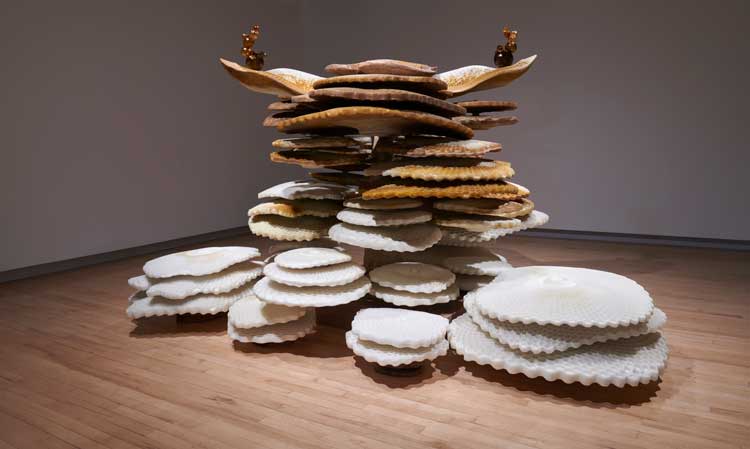
Installation view of Marguerite Humeau, When Forms Come Alive, 7 February — 6 May 2024. Photo: Jo Underhill. Courtesy the Hayward Gallery.
It is the London-based French artist Marguerite Humeau, however, whose work most closely conjures up the processes of the natural world. Three of her sculptures are placed in a low-lit room, subtly suggesting a cabin or deep forest glade. They are both formally redolent of natural forms and repositories of organic material. The Guardian of Ancient Yeast (2023) incorporates beeswax, a 150-year-old walnut and 4,500-year-old yeast into a towering structure that resembles a termite mound. The Holder of Wasp Venom (2023), which does indeed contain that nasty poison, is a mound of honeycombed disks. It looks like a vast subterranean fungus, stretching across an invisible wall, with slimy glass molluscs sitting on top. A soundtrack of puffing saxophone induces the sense that these mounds are slowly conversing with each other, in a language older than our human tongues.
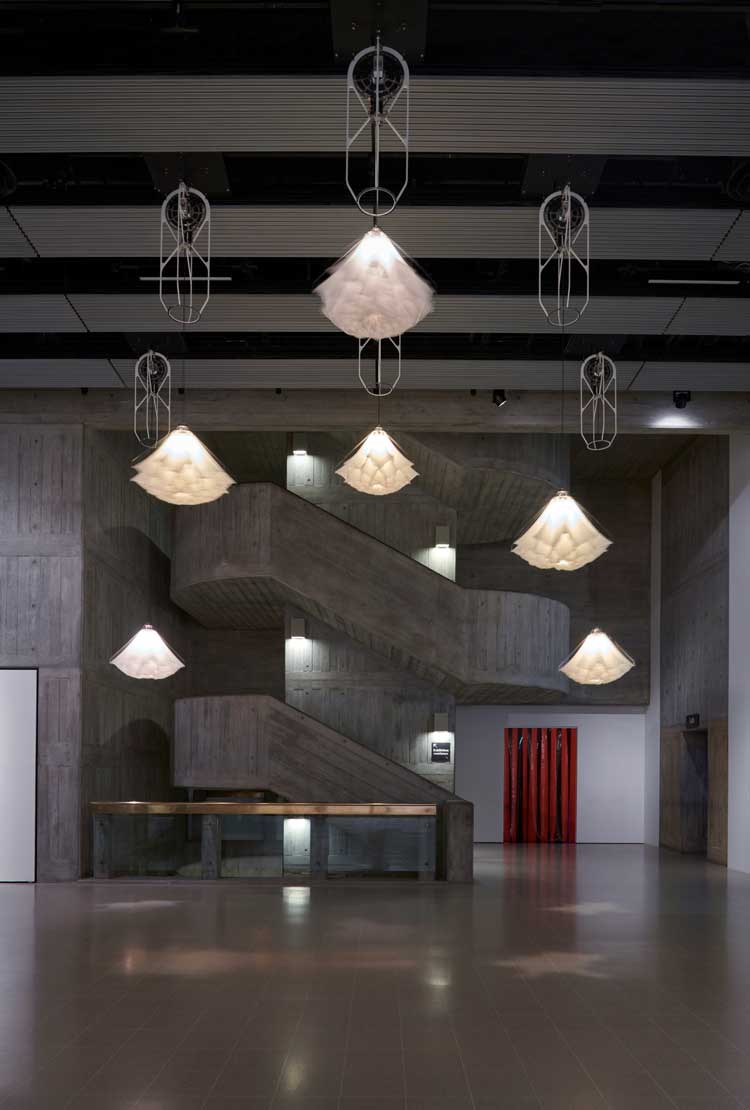
Installation view of Studio DRIFT, When Forms Come Alive, 7 February — 6 May 2024. Photo: Jo Underhill. Courtesy the Hayward Gallery.
The only work here that incorporates propelled movement is an outlier. Studio Drift, the partnership of Amsterdam-based design graduates Lonneke Gordijn and Ralph Nauta, have contributed a set of their Shylights: spectral lamps that drop down from the ceiling in a graceful dive before being pulled up into their sheaths. Drift was inspired by how flowers shift their petals in response to bees and sunlight. But Skylight also resembles pirouetting dances, floating jellyfish and hungry ghosts, bobbing down to haunt people below. They are captivating objects. But their motorised hum feels a world apart from the intimated movement on display elsewhere.
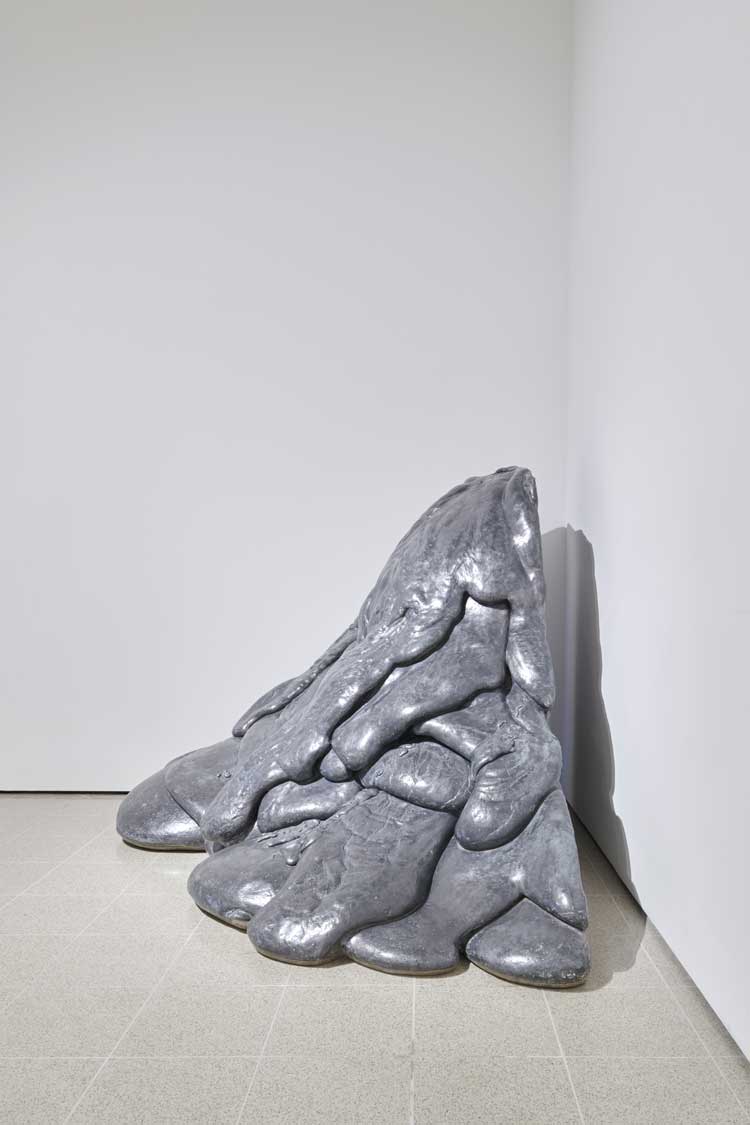
Installation view of Lynda Benglis, When Forms Come Alive, 7 February — 6 May 2024. Photo: Jo Underhill. Courtesy the Hayward Gallery.
Placing these diverse works together at the Hayward sometimes softens their intended meanings. Blazy’s foam bouquet was first installed in a Parisian monastery in 2012. There, the cheapness of soap contrasted with the grandeur of the gothic walls that surrounded it, and the ephemerality of the sculpture became more marked against the centuries-old setting. But the Hayward’s white-walled interior enhances the impact of some other works. Lynda Benglis’s Quartered Meteor (1969, cast 1975) is a lead mould of an earlier work made by piling polyurethane foam in the corner of the room. The gloopy, glossy mass resembles an undulating lava flow. At the Hayward, it is placed a few centimetres away from the wall, so that its pin-straight back becomes an uncanny foil to its lumpy front.
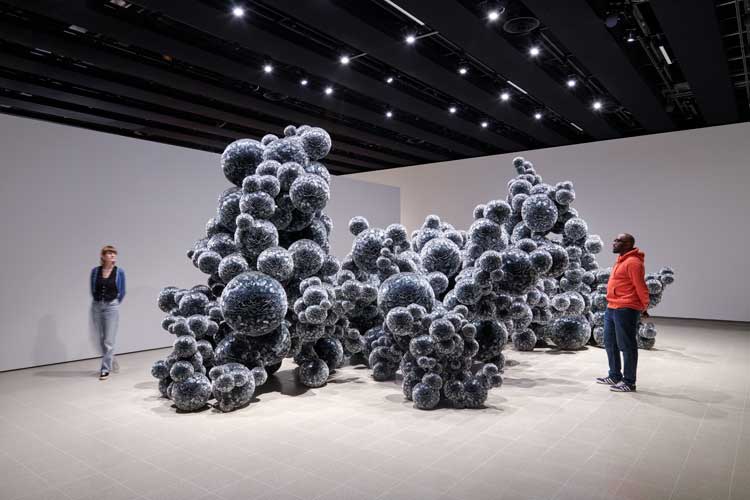
Installation view of Tara Donovan, When Forms Come Alive, 7 February — 6 May 2024. Photo: Jo Underhill. Courtesy the Hayward Gallery.
The gallery’s gleaming neatness and pin-perfect lighting also casts into relief some astonishing colours and textures, whether the shimmering Mylar discs of Tara Donovan’s Untitled (Mylar) (2011) or the tessellating wires of the late Ruth Asawa’s hanging cocoons.
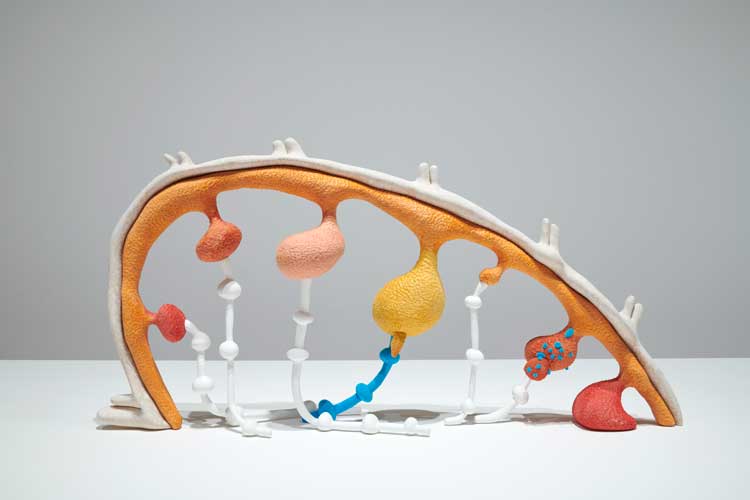
Installation view of Matthew Ronay, When Forms Come Alive, 7 February — 6 May 2024. Photo: Jo Underhill. Courtesy the Hayward Gallery.
Matthew Ronay’s wooden sculptures (2023), part innards and part torture devices, have almost cartoonishly vivid hues that contrast with their delicate textures. Brzeski’s Dream – Spontaneous Combustion (2008) is a terrifying plume of black smoke billowing from the wall and leaving behind a powdery residue. It is, the artist says, “the image of a person who is peacefully dreaming yet simultaneously combusting or (perhaps) is already burned”, but it also unmistakably evokes both volcanic and nuclear Armageddon. It is one of the few hints of darkness in this otherwise ebullient exhibition, which simulates nature but really spotlights artistic ingenuity.
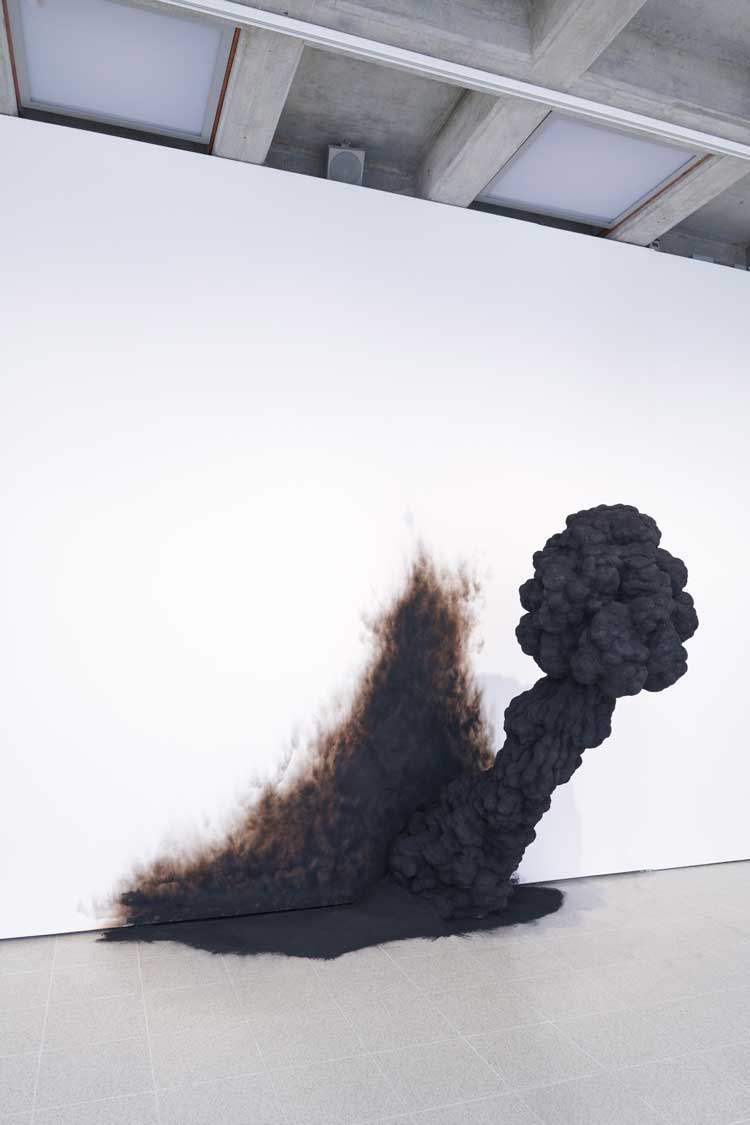
Installation view of Olaf Brzeski, When Forms Come Alive, 7 February — 6 May 2024. Photo: Jo Underhill. Courtesy the Hayward Gallery.